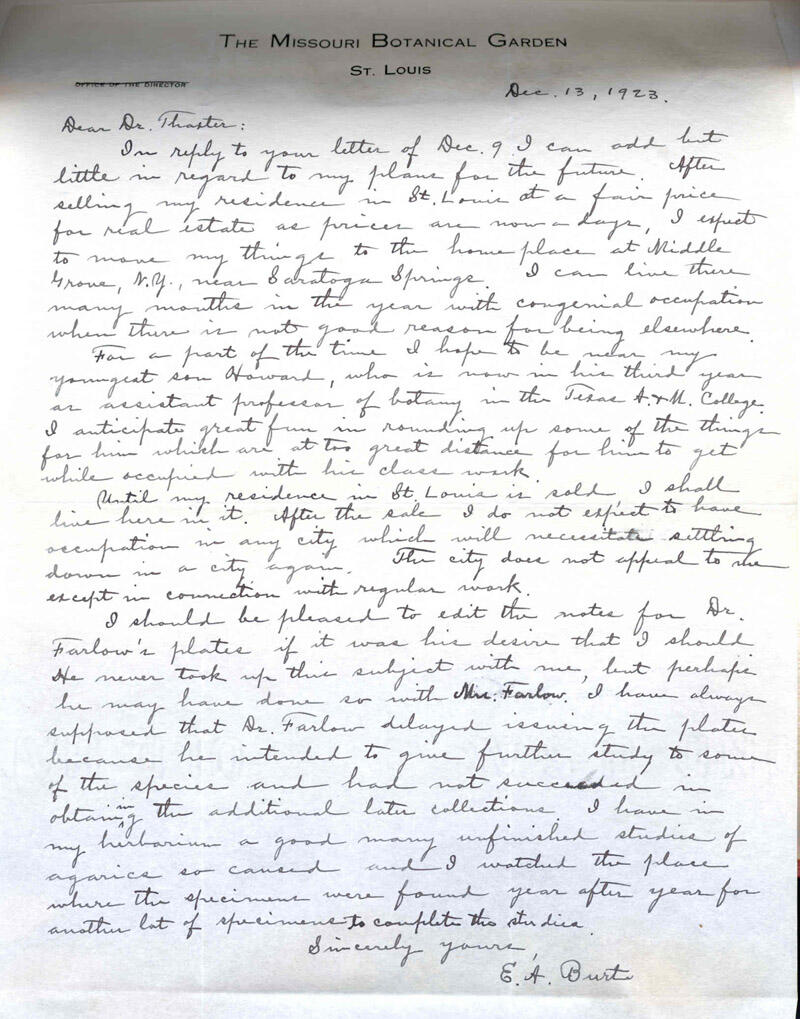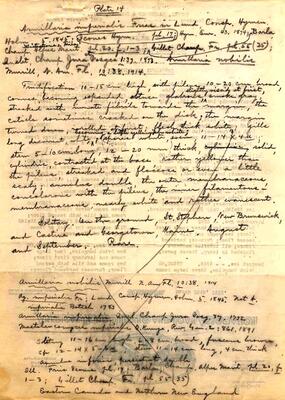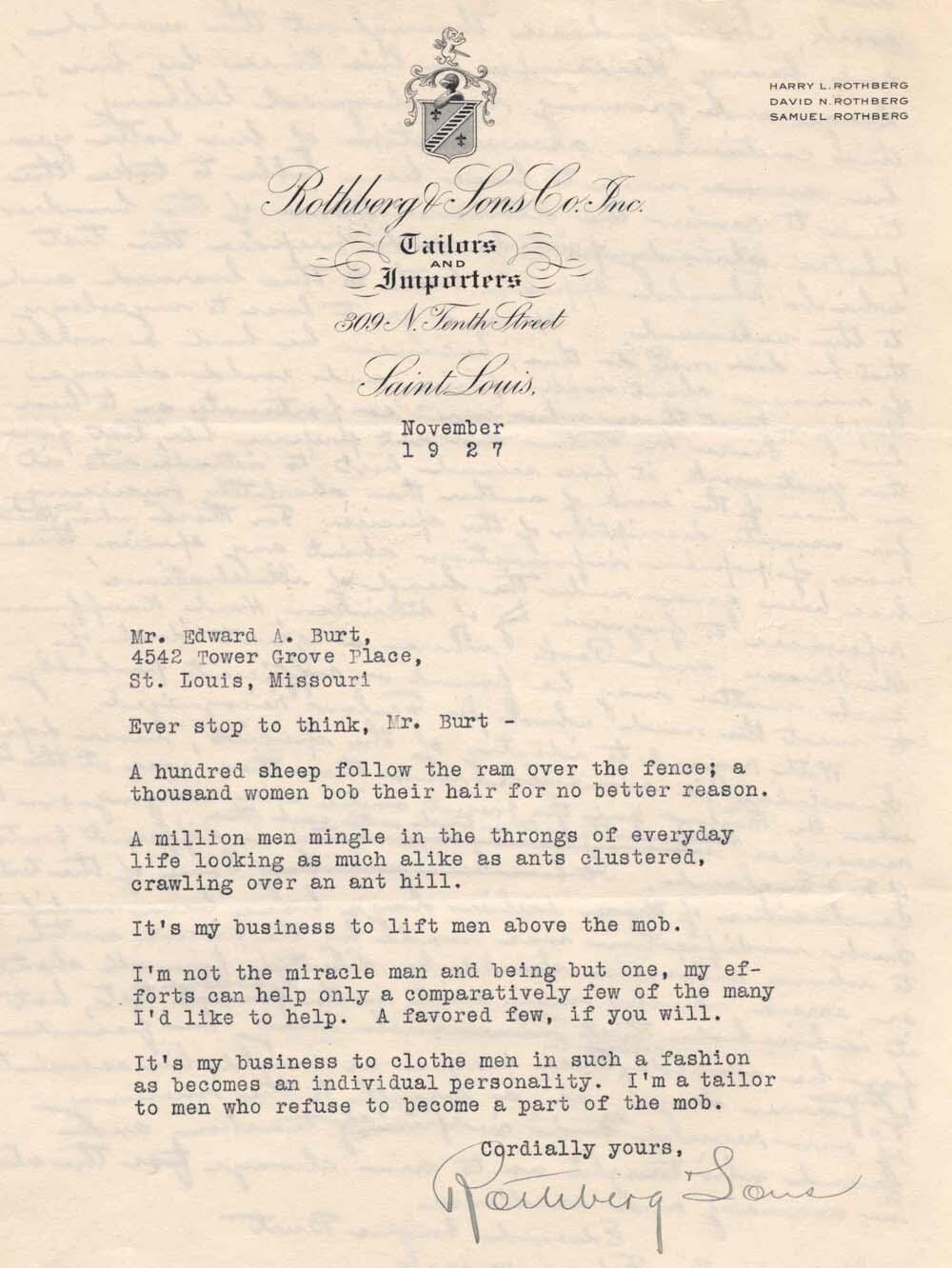 A few years after Farlow's death his widow, Lilian Horsford Farlow, contacted Dr. Roland Thaxter, a close colleague and friend of Farlow's. She decided to pursue the publication of the Icones and believed that Thaxter would offer her assistance in this task.
A few years after Farlow's death his widow, Lilian Horsford Farlow, contacted Dr. Roland Thaxter, a close colleague and friend of Farlow's. She decided to pursue the publication of the Icones and believed that Thaxter would offer her assistance in this task.
He agreed and contacted E.A. Burt, a mycologist at Washington University who had studied under Thaxter and Farlow in the late 1800s. Thaxter indicated to Burt Mrs. Farlow's interest and that Farlow himself had wanted Burt to complete the text using his notes. On December 13, 1923 Burt replied that he was unaware of Farlow's wishes but that he would be honored to write the accompanying text [18].
Burt was not able to begin this work as quickly as Mrs. Farlow would have liked because he suffered some financial setbacks and was forced to rethink his plans of moving from St. Louis to Cambridge to work on Farlow's text. On behalf of Mrs. Farlow, Thaxter wrote to Burt in 1924 and 1925 asking him to set a date to begin work. He also assured him that his expenses as well as time and labor would be taken care of [19]. Finally on February 16, 1926 Burt wrote to Thaxter that he was ready to come to Cambridge to "learn the plan of treatment of text which Dr. Farlow contemplated." He also explained that because of his rough financial situation he would be forced to stay in St. Louis and bring the plates and notes there [20].

Burt faced a difficult task. He gathered together Farlow's copies of the plates along with his notes and the preserved specimens and brought them to his home in St. Louis. Unfortunately, while Farlow had left copious notes, they were not always easy to decipher and were occasionally inaccurate.
In a letter to Thaxter in January 1930 Burt explains that he had discovered in some cases the preserved specimens were not the ones on which the drawings were based. Also occasionally Farlow's notes refer to different specimens than the ones that were kept. [21]
Burt finished the preliminary text for the Icones in late 1927. He wrote up a description by hand for each plate and then made changes and typed the finished copy. It is interesting to note that he used old advertisement correspondence for this purpose so his notes provide an interesting view of 1920s commercial culture.
Below are his notes for plate 14, Armillaria imperialis, including the ad it was written on.
 |
 |

Now that the text was well underway Thaxter needed to find a printer who could do justice to the work.